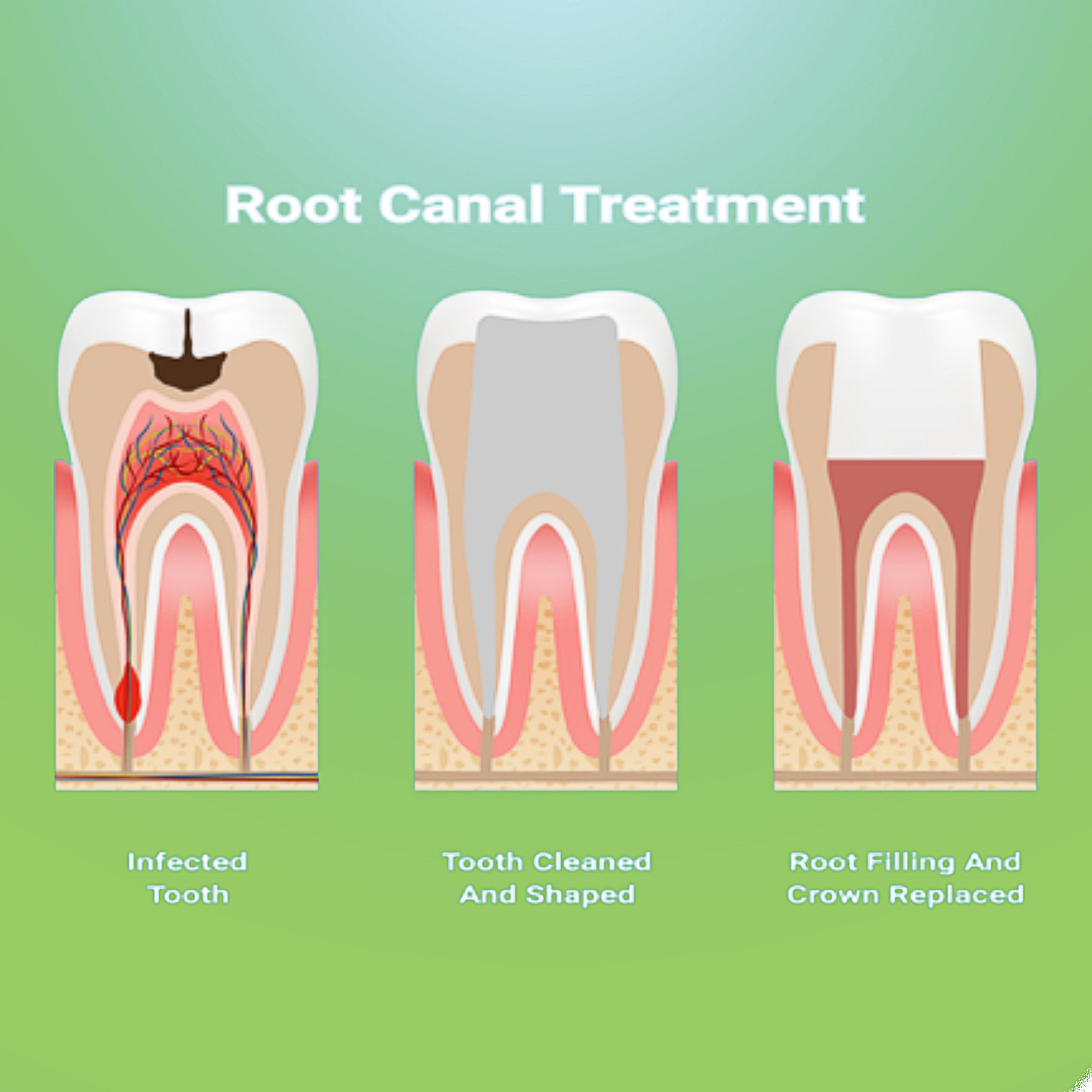
EndodonticTreatment
Endodontics deals with the tooth pulp and the tissues surrounding the root of a tooth. If the pulp (containing nerves and fibrous tissue) has become diseased or injured, endodontic treatment may be required to save the tooth.
Root Canal Therapy
When the pulp of a tooth is damaged, the only alternative to endodontic treatment is extraction. To restore chewing function and prevent shifting, the extracted tooth would need to be replaced with an implant or bridge. This may require surgery on adjacent, healthy teeth . Here at our office, we use the latest techniques to accomplish the most comprehensive approach to cleaning the internal canal spaces to avoid the removal of a healthy tooth once the decision to save the tooth is made in consultation with the patient.
Endolase; Many of the current peer reviewed articles have confirmed that the use of lasers in decontamination of the root canal spaces will accomplish up to four times the depth and extent of decontamination (removal of dead tissue and bacteria) as compared to any current technique available.
Dr. Homanfar uses the laser decontamination technique in all cases when a Root Canal Therapy is performed.
Apicoectomy; In selected cases when a diseased root canal treated tooth is decided to be saved ( when the tooth is part of a very large multi teeth bridge or when the patient cannot afford alternative treatment), apicoectomy may be arrived at the only option. During such procedure, an incision is made over the tooth, the infection cleaned, the area decontaminated with a laser, and thereafter the tip of the root is repaired (filled) with an inert material (MTA). In the past, dental amalgam was the material of choice to perform the last step, but with the advent of MTA, the predictably of these procedures have significantly improved. MTA (Mineral Trioxic Acid) forms a complete seal of the area repaired, and histological studies have confirmed complete healing of the tissue adjacent to the repair.
With today’s technology, Apicoectomy is not the treatment of choice, specially when much more predictable procedures, such as implants (Titanium or Zirconia) and Metal-free bridges, are available with a long tract record of success. However, in certain cases when the adjacent teeth do not have enough bone support, or the quality of bone surrounding the tooth is not optimal for implants, Apicoectony can be a viable option.
Root Canal Therapy vs. Extraction
With so many choice available today for tooth replacement, the ultimate decision regarding the fate of any tooth should ultimately be made with a thorough discussion of the various options available which sould include both the patient and the dentist. Here at our office, the ability of performing many of the most advanced options today offers our patients the most comprehensive set of choices available.
Procedure
1.X-rays and the damaged tooth are inspected and a local anesthetic is administered. When the tooth is numb, a dental dam is put in place to isolate the tooth and keep it clean during the procedure.
2.An opening is made in the crown of the tooth and the pulp is cleaned out to shape the space for the filling material. Afterward, the tooth is thorough disinfected using Laser and Irrigants.
3.The root canals are filled with rubber-like substance and set with an adhesive to ensure sealing. A temporary filling is put in place to close the opening.
4.In a later visit, a crown or other restoration will be placed to protect the tooth and restore it to full function.
You can call our front desk at 1-775-827-5511 Mon, Tue, Thur 8am – 5pm, Wed 8am-3:30pm, Fri 8am-12pm email us at homanfardental@gmail.com or fill the Contact Form
